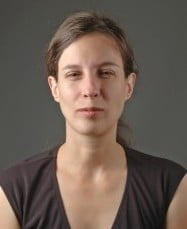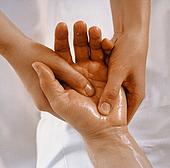Photophobia definition: Photophobia is a symptom of excessive sensitivity to light and the aversion to sunlight or well-lit places. In ordinary medical terms photophobia is not a morbid fear or phobia, but an experience of discomfort or pain to the eyes due to light exposure.
The best photophobia treatments begin by diagnosing the underlying causes.
Sometimes a physical condition can also lead to the development of light sensitivity, such as corneal abrasion, abnormalities of the eye, or an eye trauma. Other causes may be from some type of environmental exposure. Quite often photophobia accompanies migraine headaches.
Question for Dr. Leia: My friend’s daughter has been stuck in bed for over two weeks with a headache that has her sensitive to sound and light. She is about to fall way behind in school, and we are looking for any kind of help.
Dr. Leia’s Answer: It is admirable that you want to help your friend’s daughter. It seems strange that she has been confined to bed for two weeks with a headache or migraine as you described without any professional medical intervention.
It would probably be prudent to tell your friend that his daughter needs some medical advice. Try to do this without being too forward or pushy and with some modicum of tact; maybe suggesting that it is his idea that she be taken to a specialist.
If your friend does not believe in taking chemical drugs or visiting a medical doctor, there are wonderful naturopathic doctors who treat migraines and headaches. Also, acupuncture has been proven to help immensely with headaches, so visiting an acupuncturist and Chinese herbalist would be a practical suggestion.
Migraine Headaches Symptoms
 Migraine headaches are more severe than an ordinary headache, and usually are accompanied by a warning sign or aura, such as light flashes, blind spots, or tingling in the leg or arm.
Migraine headaches are more severe than an ordinary headache, and usually are accompanied by a warning sign or aura, such as light flashes, blind spots, or tingling in the leg or arm.
Migraine sufferers can be extremely sensitive to lights and sounds, and thus seek out a quiet dark place to recover. Other migraine symptoms can include nausea with or without vomiting.
The pain can be either one-sided or located on both sides of the head. As you described, this pain can interfere with regular activities and can be worse with physical movement. You didn’t mention how old your friend’s daughter is, but migraines can typically begin in childhood, adolescence, or early adulthood, and may become less frequent and less intense as they grow older.
Migraine Triggers
There are many triggers or causes to set off a migraine, so it is important that your friend’s daughter be evaluated to see if they can find a cause.
These triggers may include: food allergies, alcohol, cheese, chocolate, aspartame, caffeine overuse, preservatives, MSG or monosodium glutamate, and other known or unknown food allergies.
Other contributors can be skipping meals or fasting, stress, hormones which rapidly fluctuate in adolescents, bright lights and sunshine, both synthetic and natural scents, secondhand smoke, not enough or too much sleep, environmental humidity or pressure, medications, and a head injury or trauma.
Diagnosing Migraines
Medical science uses sophisticated methods to diagnose migraines. Two of these methods may include MRI, or Magnetic Resonance Imaging, which can visualize the blood vessels and the details of the brain to check for stroke, tumors, aneurysms, and other brain problems; and a CT or Computerized Tomography—which is an imaging procedure using computerized X-rays of the brain—which can diagnose infections, tumors, etc. (However, there studies report concern over CT scan exposure, so an MRI would be a preference.)
Treating Migraines
It is best not to take do-it-yourself over the counter drugs such as ibuprofen, Advin, Motrin, and aspirin over long periods of time because long term treatment with these drugs can complicate the picture and cause ulcers, bleeding, and abdominal pain, and may even worsen the headaches by causing rebound headaches which would require more and more increased doses of pain medication. And it is best to avoid Tylenol.
 After the cause has been found, then it is important to take good care not to trigger the migraines again, eat a healthy diet without junk foods, and get enough rest and relaxation and exercise, and adequate sleep.
After the cause has been found, then it is important to take good care not to trigger the migraines again, eat a healthy diet without junk foods, and get enough rest and relaxation and exercise, and adequate sleep.
If no definitive cause has been found after a complete diagnostic examination and testing, encourage the daughter to keep a journal or diary of the signs and symptoms.
It is not usual for a migraine headache to last for two weeks, so medical intervention is definitely advised as soon as possible.
Please encourage your friend to take his daughter in for diagnosis and treatment. The diagnostic use of an MRI scan may be important in her case. Good luck.



